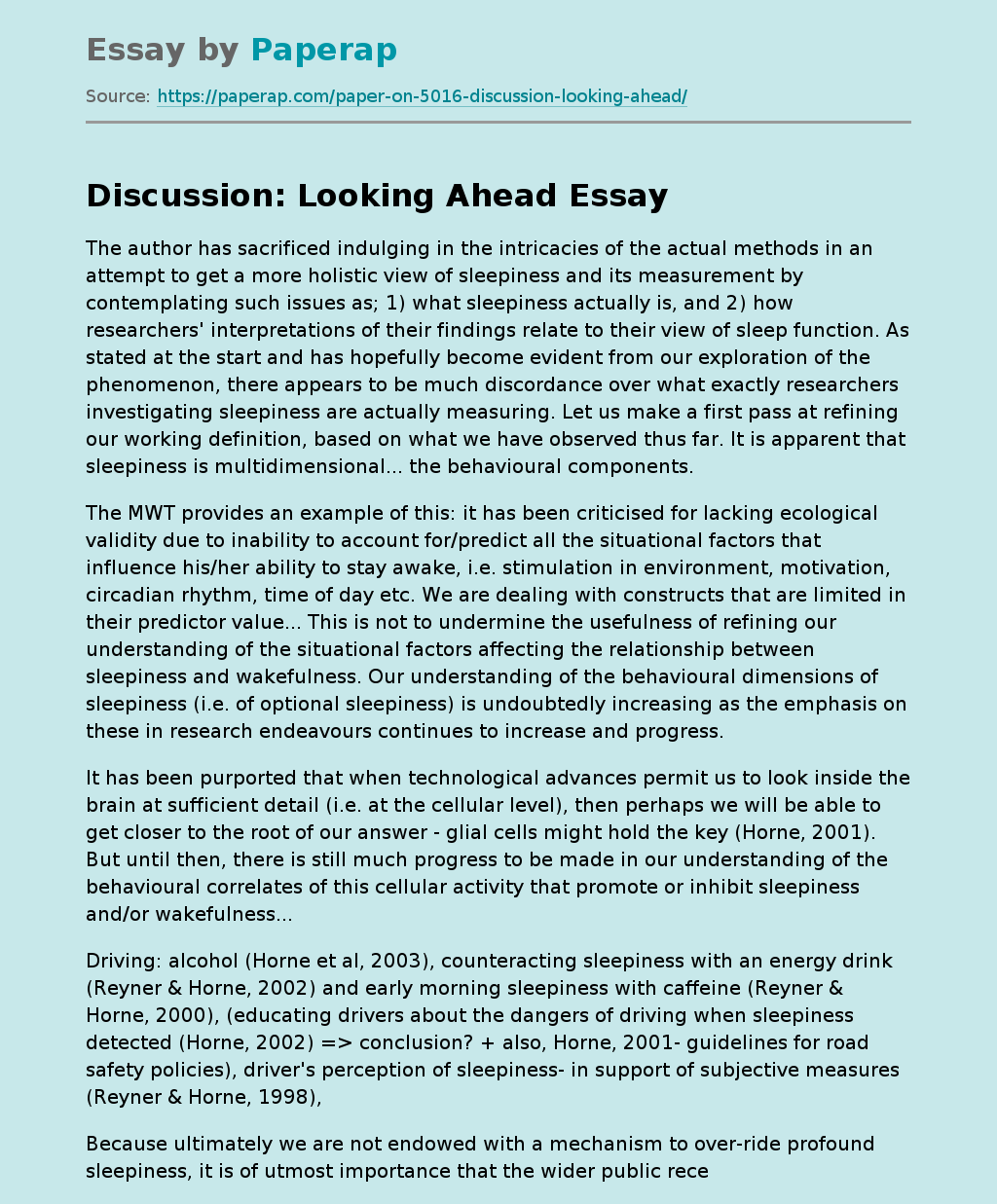Discussion: Looking Ahead
The author has sacrificed indulging in the intricacies of the actual methods in an attempt to get a more holistic view of sleepiness and its measurement by contemplating such issues as; 1) what sleepiness actually is, and 2) how researchers’ interpretations of their findings relate to their view of sleep function. As stated at the start and has hopefully become evident from our exploration of the phenomenon, there appears to be much discordance over what exactly researchers investigating sleepiness are actually measuring. Let us make a first pass at refining our working definition, based on what we have observed thus far.
It is apparent that sleepiness is multidimensional… the behavioural components.
The MWT provides an example of this: it has been criticised for lacking ecological validity due to inability to account for/predict all the situational factors that influence his/her ability to stay awake, i.e. stimulation in environment, motivation, circadian rhythm, time of day etc. We are dealing with constructs that are limited in their predictor value… This is not to undermine the usefulness of refining our understanding of the situational factors affecting the relationship between sleepiness and wakefulness.
Our understanding of the behavioural dimensions of sleepiness (i.e. of optional sleepiness) is undoubtedly increasing as the emphasis on these in research endeavours continues to increase and progress.
It has been purported that when technological advances permit us to look inside the brain at sufficient detail (i.e. at the cellular level), then perhaps we will be able to get closer to the root of our answer – glial cells might hold the key (Horne, 2001).
But until then, there is still much progress to be made in our understanding of the behavioural correlates of this cellular activity that promote or inhibit sleepiness and/or wakefulness…
Driving: alcohol (Horne et al, 2003), counteracting sleepiness with an energy drink (Reyner & Horne, 2002) and early morning sleepiness with caffeine (Reyner & Horne, 2000), (educating drivers about the dangers of driving when sleepiness detected (Horne, 2002) => conclusion? + also, Horne, 2001- guidelines for road safety policies), driver’s perception of sleepiness- in support of subjective measures (Reyner & Horne, 1998),
Because ultimately we are not endowed with a mechanism to over-ride profound sleepiness, it is of utmost importance that the wider public receive proper education vis-�-vis the putative factors affecting sleepiness and how these can be best counteracted, but more importantly, recognised and acknowledged.
References
T. and Gillberg, M. Subjective and objective sleepiness in the active individual. International Journal of Neuroscience, 1990, 52: 29-37. (KSS) Alexander, C., Blagrove, M. and Horne, J. A. Subject motivation and the multiple sleep latency test. Sleep Research, 1991, 20: 403-?. (MSLT)
Discussion: Looking Ahead. (2017, Sep 15). Retrieved from https://paperap.com/paper-on-5016-discussion-looking-ahead/

